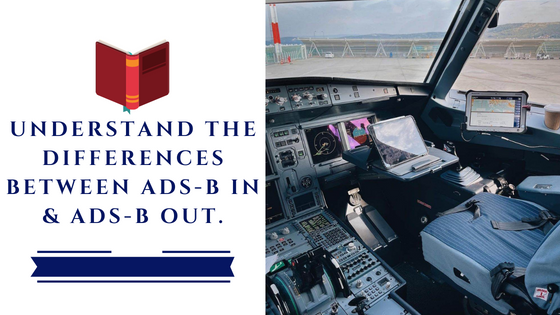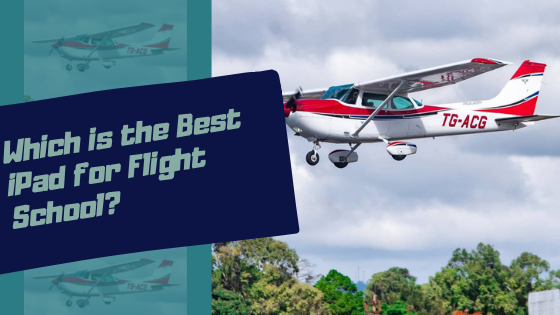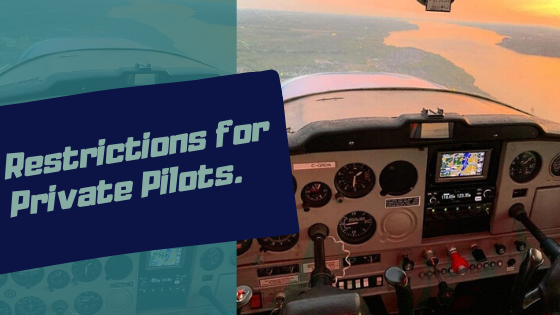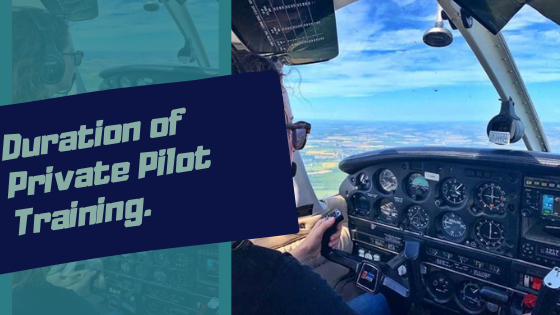ADS-B In and Out is explained for novice pilots in simple language.

So what is all the fuss about—and what is ADS-B anyway? And what are its Ins and Outs?
ADS-B is a surveillance system whereby an aircraft automatically reports its positional data and other information to ground stations and other aircraft.
More specifically, aircraft determine their location and other navigational parameters using onboard equipment.
A transponder then transmits this data (once per second) to aircraft equipped to receive it and ground stations which relay the data to ATC and other aircraft.
Still confused?
Like most things to do with aviation, ADS-B is an acronym.
It might not be pretty, but it is nonetheless very descriptive and a much better understanding of what ADS-B can achieve by unpacking this acronym.
ADS-B stands for:
Automatic – The system is automated because it requires no pilot input or external interrogation.
Dependent – The system depends on positional information and other data from onboard GPS and navigational equipment.
Surveillance – The system provides 3-D position, flight ID, and other information to enable real-time airspace surveillance.
Broadcast – The system continually broadcasts information to ground stations and nearby aircraft equipped to receive that information.

As a system, ADS-B has two components: ADS-B In and ADS-B Out. These terms—In and Out—are most likely what you will hear most while discussing ADS-B.
Some products are In, some are Out, and some are both In and Out.
What are the differences between ADS-B in and ADS-B out?
ADS-B in works as the ADS-B receiver. Portable ADS-B receivers are ADS-B devices. So what is ADS-B out?
I will get to that, but let’s understand ADS-B first.
ADS-B or portable ADS-B devices enable airplanes to receive real-time weather data and relevant flight information.
However, a portable ADS-B receiver does not enable the pilot to transmit their location to the ground controller. Likewise, the airplane in your vicinity will be unaware of your location.

The job of an ADS-B receiver is to receive information on aircraft position and weather data. Having an ADS-B receiver as a pilot will increase your situational awareness.
However, having an ADS-B or portable ADS-B receiver does not enable the pilot to transmit their location to the ground controller.
Likewise, the airplane in your vicinity would be unaware of your location.
The job of an ADS-B receiver is to receive information on aircraft position and weather data.
Although ADS-B In is usually not mandated by law, many aviators choose to acquire the technology because it ultimately benefits flyers.
The ability to pair an ADS-B receiver with an iPad or a tablet has been described as a “game changer” in aviation as it has enormously enhanced pilots’ situational awareness.
There are several things that you must keep in mind concerning ADS-B In.
Firstly, although it is a great tool, it must fulfill requirements such as the FAA’s 2020 mandate for ADS-B Out.
Moreover, with ADS-B In on an aircraft that does not have ADS-B Out, traffic displays will be incomplete because—unlike weather information—traffic information is not continually broadcast.
ADS-B In refers to receivers (either portable or panel-mounted) which enable an aircraft to receive traffic and weather reports from other aircraft and ground stations. ADS-B In weather and traffic information is subscription free.
To see all this data, a pilot requires an ADS-B-compliant display. An iPad combined with a portable ADS-B receiver to display all the information is convenient for pilots.
What exactly ADS-B Out does?
ADS-B out transmits information about the location of the equipped aircraft to air traffic controllers and other aircraft. An ADS-B Out allows satellites to locate the airplane more accurately than radar.
So the air traffic controller has more accurate information about your airplanes equipped with an ADS-B Out. The data includes:
- Aircraft Location;
- Altitude;
- Speed of the aircraft;
- Identification.

As the name implies, ADS-B Out is the technology that allows aircraft to self-broadcast their location and other data to external ground stations and other aircraft.
Mandates requiring ADS-B—such as the FAA mandate in the USA—apply to ADS-B Out.
In all airspaces where aircraft previously needed a transponder to fly, they now need ADS-B Out.
Unlike ADS-B In, which can come in the form of either panel-mounted or portable receivers, ADS-B Out can only be panel-mounted.
When a ground station receives a report from an aircraft equipped with ADS-B Out, it issues a traffic broadcast centering that aircraft.
As a result, a nearby aircraft equipped with ADS-B In (receiver) will receive a traffic picture that is customized and centered around the ADS-B Out equipped plane that communicates with the ground station.
Although this is still more information, it can be tricky since it will only show traffic in the immediate vicinity (15 nautical miles around and within 3500 feet above or below) of the aircraft issuing the ADS-B Out broadcast.
This can result in an ADS-B In equipped flight receiving that broadcast needing to learn about flights in its immediate airspace.
Regardless of the commission, ADS-B Out is essential because the traffic picture received by an ADS-B In aircraft will be incomplete unless it has ADS-B Out and can thus receive the customized traffic picture based on it.
Lastly, if you don’t have an ADS-B Out in your airplane, you cannot enter ADS-B rule airspace. From January 2020, Federal Aviation Administration Regulation requires every aircraft equipped with ADS-B to fly into Class A, B, and C airspace.
Sources:
● YouTube. (2014). Understanding Ads-B: A Pilot’s Guide. YouTube. Retrieved November 21, 2022, from https://www.youtube.com/watch?v=1LvZy59FhQw&t=3036s.





